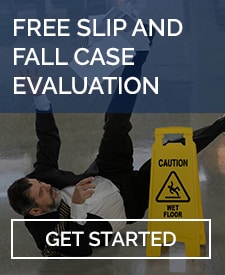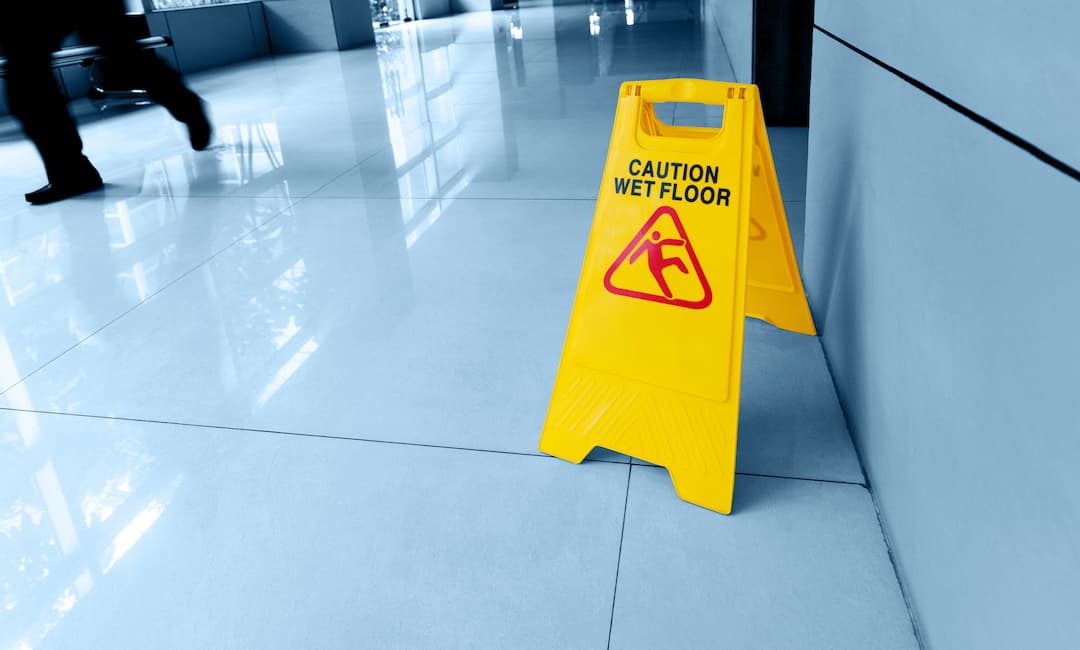The quest to answer the pressing question, “can you sue if there is a wet floor sign?” plunges us into the intricate legal landscape surrounding slip and fall injuries in Florida. It’s a journey that demands a nuanced understanding of several key legal concepts.
Negligence: A Core Factor When Asking, “Can You Sue if There is a Wet Floor Sign?”
At the heart of many slip and fall cases lies the concept of negligence. This refers to a failure in exercising reasonable care, which in turn, can lead to an injury. The presence of a wet floor sign can be a determinant in assessing negligence.
Duty of Care and “Can You Sue if There is a Wet Floor Sign?”
Property owners bear a duty of care towards individuals on their premises. This duty encompasses maintaining a safe environment and addressing hazards swiftly. A crucial part of this is whether a wet floor sign was displayed or not. For more information on premises liability in Florida, you can refer to the Florida Statutes on Premises Liability for Transitory Foreign Substances.
Reasonable Action in the Context of “Can You Sue if There is a Wet Floor Sign?”
The definition of reasonable action can vary. It encapsulates a timely response to hazards and the provision of adequate warning to individuals, often via a wet floor sign, is a part of the OSHA’s general requirements for maintaining workroom floors in a clean and dry condition.

Delving Deeper: Florida’s Case Scenarios and Court Rulings on “Can You Sue if There is a Wet Floor Sign?”
Florida’s legal waters can be tricky to navigate especially when it comes to understanding the implications of “can you sue if there is a wet floor sign?” Delving into past case scenarios and court rulings can offer a clearer perspective on this matter.
Analysis of Past Rulings on “Can You Sue if There is a Wet Floor Sign?”
Through the lens of Florida’s jurisprudence, we find that wet floor sign law plays a pivotal role in slip and fall cases. The presence or absence of a “don’t slip sign” or a wet floor sign often emerges as a significant factor in court rulings. For instance, a wet floor lawsuit might tilt in favor of the victim if it’s proven that the warning sign was not visible or clear enough.
Understanding the specifications for accident prevention signs and tags by OSHA could provide more insights into the legal implications of wet floor signs3
Notable Case Examples: Understanding “Can You Sue if There is a Wet Floor Sign?”
In one instance, a victim who encountered a “wet floor sign but still fell” managed to secure a favorable ruling as the court found the property owner had not taken reasonable actions to rectify the dangerous condition. Conversely, cases where a “slip and fall no wet floor sign” was present, the court often holds the property owner liable for the injuries sustained.
| Scenario | Legal Implication | Recommended Action for Property Owners |
|---|---|---|
| Wet floor sign is visible | May reduce liability as the warning was provided. | Ensure signs are clear and easily visible. |
| No wet floor sign displayed | Increased liability as there was no warning given about the hazard. | Always place a sign when floors are wet. |
| Wet floor sign is present but | Liability may still exist if the sign was not conspicuous or the hazard was not rectified in a timely manner. | Ensure sign visibility and address hazards. |
| not adequately visible | ||
| Wet floor sign, yet floor is | Increased liability as the sign might be seen as an acknowledgment of the hazard. | Address hazards promptly, keep area safe. |
| excessively slippery | ||
| Wet floor sign placed after | Increased liability as the warning was not timely. | Place signs immediately when hazard is noticed. |
| an incident occurs |
Analyzing Real-World Implications of “Can You Sue if There is a Wet Floor Sign?”
Victim’s Perspective
The reality for victims who “slip on wet floor” despite a warning sign is that their legal journey might be uphill. However, if there was “slipping on a wet floor with no sign”, the legal tide could turn in their favor.
Property Owner’s Perspective
For property owners, the absence or inadequacy of a “slip and fall sign” can be a gaping legal loophole. On the other hand, adhering to “wet floor signs law” by placing conspicuous warning signs could be a strong defense against liability.
Practical Insights for Businesses and Individuals Regarding “Can You Sue if There is a Wet Floor Sign?”
For Businesses
Ensuring that a clear “don’t slip sign” is placed whenever there’s a wet or slippery floor is a practical step towards legal protection. Understanding “are wet floor signs required by law” is crucial for business owners to mitigate risks associated with slip and fall accidents.
The Safety Standards for Signs, Signals, and Barricades by OSHA also provide guidelines on the requirements and standards for warning signs like wet floor signs
For Individuals
Being vigilant and heeding wet floor signs is crucial. However, if you find yourself in a situation where you “slipped and fell with no wet floor sign” in sight, documenting the scene immediately could be vital for a potential legal claim.
This expanded discussion delves deeper into the real-world implications surrounding the question “can you sue if there is a wet floor sign?” from both the perspective of the victim and the property owner, providing practical insights for navigating this complex legal terrain.
| Audience | Situation | Recommended Action |
|---|---|---|
| For Businesses | Wet or slippery floor identified | 1. Place a conspicuous ‘wet floor’ or ‘don’t slip’ sign immediately. |
| 2. Address the hazard promptly by cleaning or drying the area. | ||
| 3. Document the actions taken for legal protection. | ||
| Slip and fall incident occurs | 1. Provide immediate assistance to the individual. | |
| 2. Document the incident, including photographs, and gather witness statements. | ||
| 3. Consult with legal professionals to understand liability and next steps. | ||
| For Individuals | Slip and fall on a wet floor | 1. Seek medical attention as needed. |
| 2. Document the scene, including photographs of the floor, the area, and the presence or absence of signs. | ||
| 3. Gather contact information from any witnesses. | ||
| 4. Consult with legal professionals to understand your rights and potential legal recourse. |
Conclusion: Reflecting on “Can You Sue if There is a Wet Floor Sign?”
Summarizing the vital takeaways from the discussion, highlighting the importance of awareness and proactive measures in preventing slip and fall accidents. Encouraging both business owners and individuals to foster a culture of safety and legal accountability, thereby creating a safer environment for all. Consulting with a Slip and Fall Attorney can provide further guidance on legal rights and responsibilities concerning wet floor sign scenarios.
Frequently Asked Questions
What determines the ability to sue despite a wet floor sign?
The ability to sue in cases where there’s a wet floor sign primarily hinges on proving negligence on the part of the property owner. If it can be proven that the property owner failed to take reasonable steps to prevent the accident or that the wet floor sign was insufficient or unclear, a lawsuit can still be pursued.
How does Florida law approach slip and fall cases with a wet floor sign?
Florida law operates under a system of comparative negligence. Even if a wet floor sign was present, if the property owner can be shown to have been negligent, they may be held partially liable. The presence of a wet floor sign can potentially reduce the property owner’s liability, but won’t necessarily eliminate it.
What should individuals do if they slip and fall despite a wet floor sign?
Individuals should seek medical attention, document the scene, gather witness information, and consult with legal professionals. It’s crucial to gather as much evidence as possible to assess the viability of a legal claim, even when a wet floor sign is present.
Are property owners always protected from lawsuits with a wet floor sign?
No, the presence of a wet floor sign does not grant absolute protection to property owners. If it can be proven that the property owner was negligent, failed to address the hazardous condition in a timely manner, or that the sign was inadequate, they can still be held liable in a slip and fall lawsuit.




